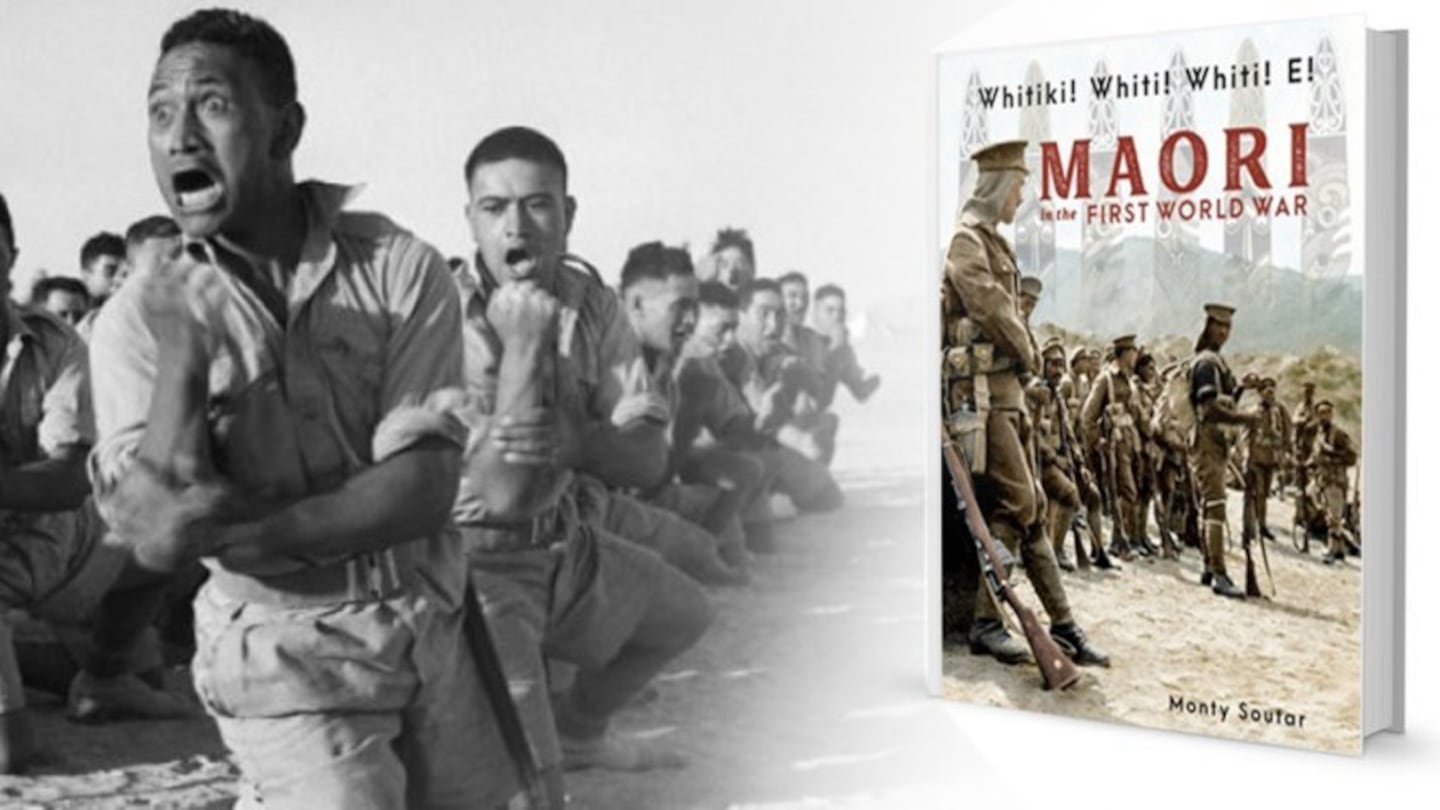The story of Māori soldiers' contribution to WWI is being told for the first time in a new book, Whitiki! Whiti! Whiti! E! Maori in the First World War.
Written by Dr Monty Soutar, the book has 600 pages and 1,000 illustrations outlining how more than 2,200 Māori served in the war, with 330 losing their lives.
Chief Historian Manatū Taonga Neill Atkinson says the men served in the Middle East, Malta, Gallipoli, France, Belgium and England between 1914 and 1919, "mainly in the Māori contingent and its successors, the New Zealand Pioneer Battalion and the New Zealand Māori Pioneer Battalion.”
The book describes pre-war New Zealand before following the soldiers overseas, giving insight into their training, trench warfare and the role of the Māori Pioneer Battalion in and out of the front line.
"Whitiki! also addresses the varied Māori response to the call for volunteers. Some iwi refused to encourage their sons to enlist even after conscription was extended to their districts in 1917," says Atkinson.
"With land confiscations and the treatment meted out to Māori at places like Parihaka, Rangiaowhia and Ōrakau still raw in the minds of their elders, many young men from these areas could not be moved to serve."
Māori Pioneer Battalion soldiers parade along Gladstone Road, Gisborne. Source: Tairawhiti Museum, Gisborne
In the final chapter, the soldiers' homecoming, repatriation and life after the war are described in the book.
"Whitiki! also covers the experiences of the Battalion's Pasifika volunteers - mostly Cook Islanders, Niueans and a handful of Tongans, Fijians, Samoans and Gilbert and Ellice Islanders."
It is the tenth book to be published in a series of histories of New Zealand and WWI, produced by Manatū Taonga, Massey University and the New Zealand Defence Force.
The book will be launched at Hui Aroha, a Māori Pioneer Battalion memorial parade being held this Saturday in Gisborne.



